Why the horror industry is becoming a profitable genre
- Published
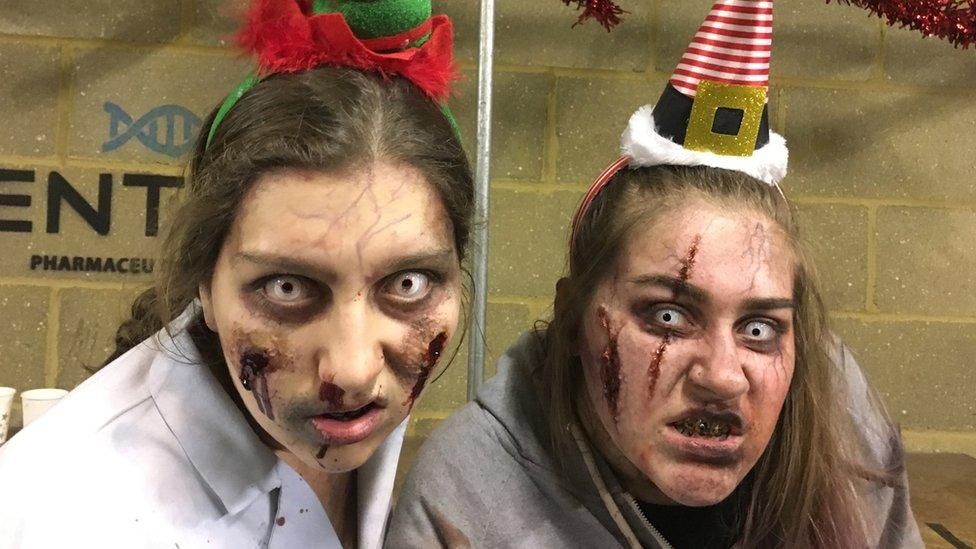
Zombies and Christmas: A seasonal mash-up too far?
A zombie walks into a shopping centre.
That may sound like the start of a creepy joke, but for horror fans an encounter with the walking dead is a very serious proposition.
In a disused shopping centre, sweating, sometimes screaming, punters run up long-decommissioned escalators to get away from zombies (or at least actors convincingly pretending to be them).
Racing past empty newsagents and deserted jeweller, the people desperately try not the draw the attention of the re-animated corpses giving chase.
Full immersion
It feels like something straight out of a low budget horror film, and in a way it is, says Lee Fields, a director of Zed Events which stages the zombie survival days in Reading, west of London.
"What we've created is a full immersion movie-like experience, so instead of playing a computer game or sitting in the cinema watching a zombie movie, you come here," he says.
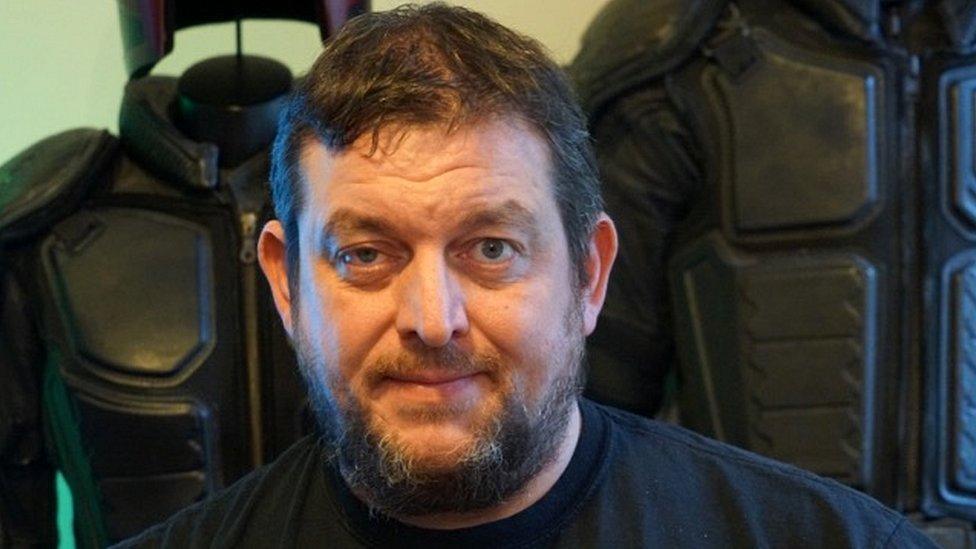
"We've had marriage proposals in the middle of a zombie attack," says event organiser Lee Fields
"All hell breaks loose and you participate as if it's happening for real. It's led by actors, they propel you through a story line which you interact with."
Punters pay £119 for two to three hours of the grizzly alternative reality, and although it may sound pricey it's attracted visitors from all over the world.
"We've had Americans, Canadians, Japanese; people have flown across the world," says Mr Fields.
"We also have stag and hen parties, team building exercises, and we've had proposals; in the middle of a zombie attack someone asked, 'if we survive this will you marry me?'."
Adrenalin rush
So why do people voluntarily spend an afternoon being frightened out their minds?
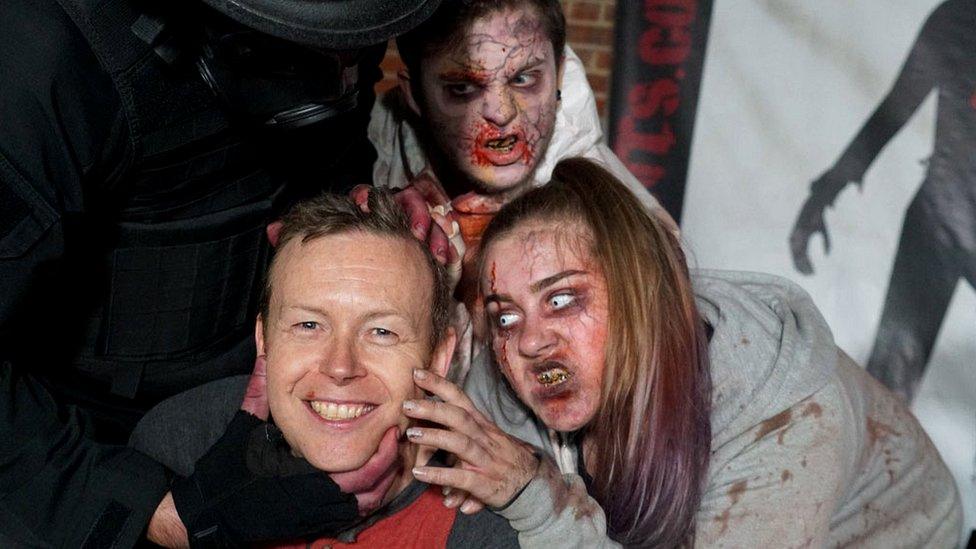
It is all about "that rush of fear", says writer and horror fan Daniel Benson
Daniel Benson, horror fan and editor of website Horror Talk.com, managed to escape the clutches of Reading's walking dead to give his assessment.
"I think it's that rush of adrenalin, that rush of fear," he says.
"You think you're not going to be scared; I didn't think I would be, but there were times when I felt my heart thumping through my chest, and I felt the fear even though I knew I wasn't at risk of any harm."
Mr Benson says that horror events in general are frighteningly successful.
"The number of zombie experiences are increasing, but so is the fright industry in general - it's big in the US, and we're starting to get more over here."
The US, though, is still the place to go for extreme frights, and they don't come more terrifying than haunted house McKamey Manor.
Originally built by owner Russ McKamey in San Diego, California, there are now two sites, Alabama and Tennessee.
Extreme attraction
Mr McKamey, who revels in the incongruity of also being a part time wedding singer, prides himself on running what he calls "the world's most extreme haunted attraction".
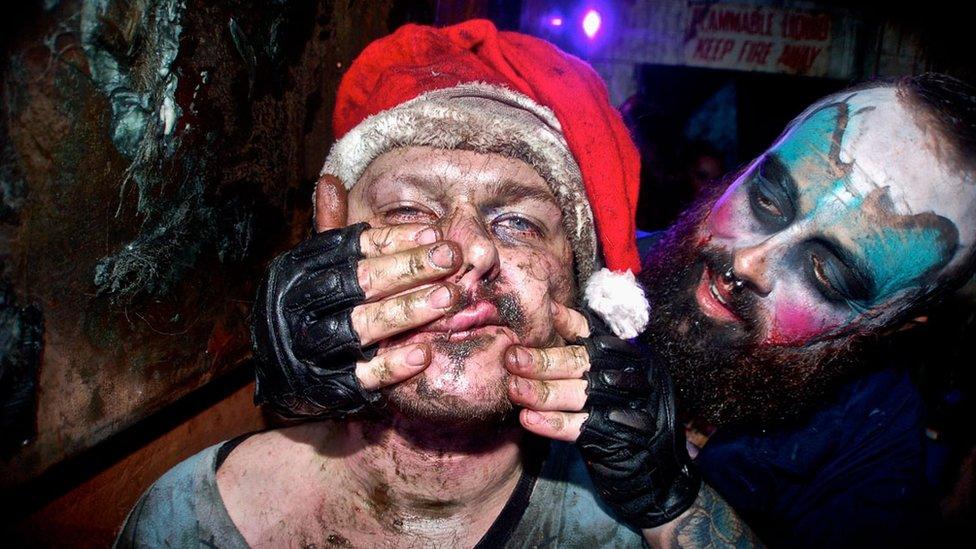
One visitor tries his luck at McKamey Manor in the US
He claims to have a waiting list of around 30,000, so what makes it so scary?
"Every experience is different," says Mr McKamey. "We tailor the particular haunt to that individual's fears and phobias.
"We talk to family members, friends and co-workers, and by doing that we're able to dig into that person's psyche. They will experience things such as being buried alive, being inside a water-based coffin with live eels."
It's such a horrific experience that despite there being a $2,000 (£1,500) reward for completing the seven to 10-hour ordeal, nobody has.
"It's not as easy as it sounds, and there's a reason that in 16 years no one has ever come close. The reason they will always fail is that my mind is stronger than their mind."
Test bed
Mind games in the form of psychological frights are a speciality of Hammer Films. The studio is best known for its Dracula films, and chairman Simon Oakes explains some of the secrets of a subtler form of scare.
"Once there's a sense of jeopardy you get people frightened," he says.
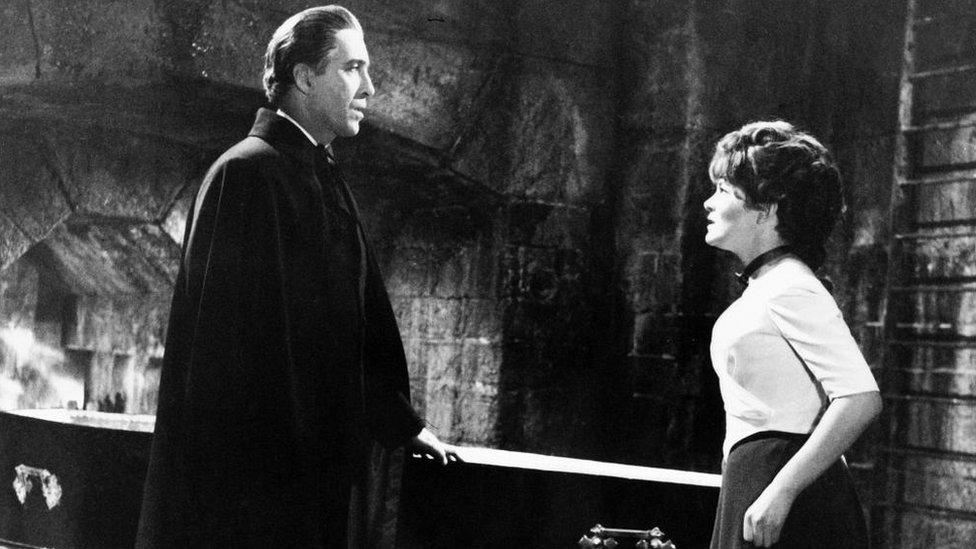
Hammer Films, best known for its Christopher Lee Dracula films, has been trying out its own immersive theatre experiences
"In Psycho there's only one really scary scene at the beginning of the movie. We often use what we call jump scares - in some cases they're nothing, just a tap coming on when you least expect it. Sometimes it can be the atmosphere that makes the film frightening."
Atmosphere was crucial to Hammer's recent immersive theatre experience, the Soulless Ones, a vampire-inspired scare evening, set in the spookily made-over Hoxton Hall in east London.
Mr Oakes, says this kind of event both brings in new audiences and acts as a testing bed for future film projects.
"It's a great creative lab for ideas, out of 10 scripts you might only make two or three, so it's a cost effective way of testing the scripts."
Hammer currently has a movie in production, The Lodge, and it's a good time to be in the business according to Georg Szalai, international business editor at The Hollywood Reporter.
"There's been a changing feel in the horror genre," he says. "There's now a lot of high concept films, with movies like Get Out, for example, tackling social issues, and there's also been a lot of critical praise.
"You don't usually see that with horror, which has often been sneered at and looked down on."
Rising profits
And fans are voting with their feet; in 2017, the adaptation of Stephen King's It made $697m (£521m).
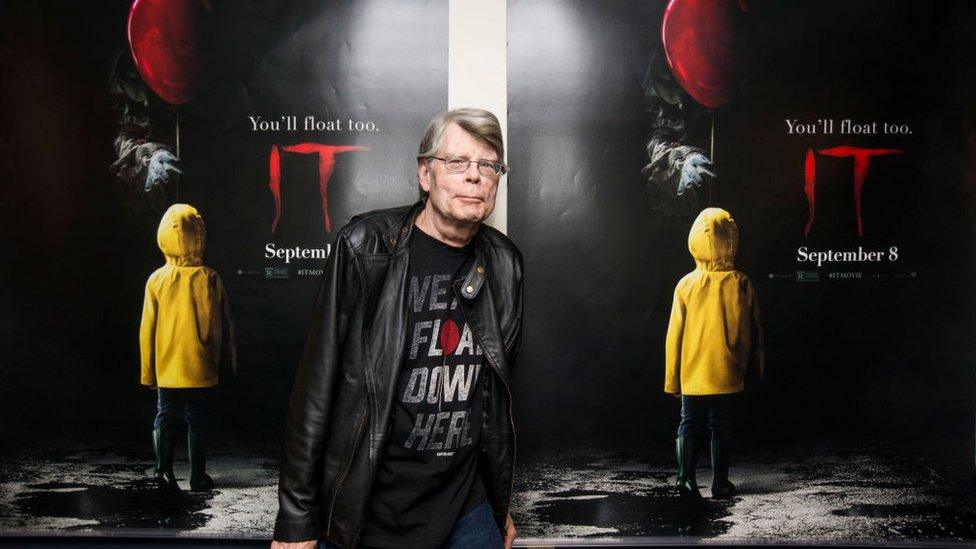
The film version of Stephen King's It was one of the highest grossing horror movies ever
"If you adjust it for inflation, the Exorcist would have made more, but in absolute dollar terms It was the biggest horror film ever," says Mr Szalai.
It's also a potentially profitable genre, he adds.
"Horror is a low cost bet, you don't usually have stars being paid tens of millions of pounds, and there's often one location so you don't have to go to far-flung destinations.
"You generally don't need the big special effects and the blown up buildings so that usually keeps the cost fairly low."
Mr Szalai points out that relatively humble budgets can reap creative dividends,
"As a very low investment, if it fails you don't lose money, so it's a big area of experimentation and innovation these days."
Which all bodes well for fans of fear.